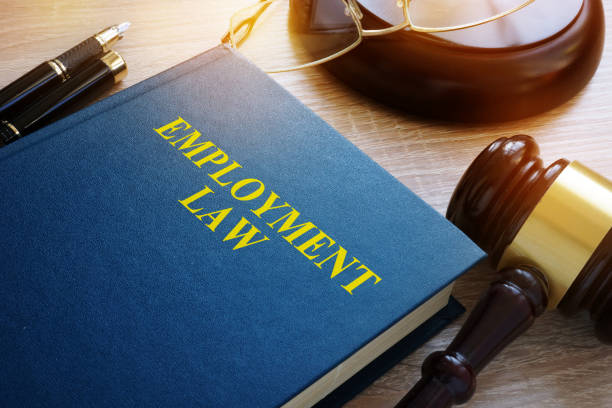Compliance with employment laws is crucial. It protects your organization from legal risks. It also fosters a fair, safe work environment. Employment laws are constantly evolving. This is especially true in areas like data security, employee rights, and remote work. Staying compliant is more challenging—and crucial—than ever. Here’s a comprehensive guide on how HR professionals and organizations can stay ahead.
Why Compliance Matters
Non-compliance doesn’t just lead to fines; it can also harm your reputation, employee trust, and overall operations. Adhering to employment laws safeguards your company’s integrity and assures employees that their rights and well-being are prioritized.
Key Steps to Ensure Compliance with Employment Laws
1. Stay Informed of Legal Changes
The legal landscape is constantly changing, and keeping up is a continuous effort. From minimum wage adjustments to new anti-discrimination policies, it’s vital to know when laws change and how they impact your organization.
- Regular Monitoring: Follow credible sources like government websites, HR associations, and law firms that specialize in employment regulations. Subscribing to newsletters or updates from the U.S. Department of Labor (DOL) or Equal Employment Opportunity Commission (EEOC) can provide regular insights on legal changes.
- Continuous Training: Schedule annual or semi-annual training sessions for HR staff. These sessions ensure they are familiar with the latest employment laws. They also cover any implications for daily HR operations. Training should also cover new technologies and practices to reduce any potential compliance gaps.
- Legal Counsel Involvement: Collaborate with legal experts. Obtain timely interpretations of complex laws. This is especially important when operating in multiple states or countries.

2. Implement Clear Policies
Establishing clear, compliant policies is the cornerstone of a legally sound workplace. These policies should address everything from anti-discrimination to data privacy.
- Comprehensive Employee Handbook: An employee handbook is essential. It ensures that everyone is aware of company policies, employee rights, and expected behaviors. Cover key areas like workplace safety, harassment prevention, equal employment, and data security.
- Policy Updates and Communication: Review policies annually to incorporate any legal updates and changes. Notify employees promptly and provide them with the updated handbook to ensure everyone remains informed.
- Accessible Documentation: Ensure that all employees have easy access to policy documents and understand how to comply with them. Encourage open communication if they need clarity on any policies.
3. Leverage HR Software for Tracking and Documentation
With modern HR software, tracking compliance data is streamlined, helping you avoid manual errors and stay up-to-date on every front.
- Automated Compliance Tools: Many HR software solutions include features to track various aspects. These aspects include leave requests, overtime, tax documentation, and labor law compliance. Automated tracking helps maintain accurate records. It ensures that your organization meets labor law requirements without the need for constant manual intervention.
- Centralized Document Storage: Digitally storing essential documents is useful. This includes signed policy acknowledgments and compliance certifications. They can provide critical evidence if you’re ever audited. This documentation also helps avoid loss of important files and ensures quick access when needed.
4. Conduct Regular Compliance Audits
Routine audits help to proactively catch and correct compliance issues before they lead to bigger problems. Audits also provide a snapshot of your current compliance status and help identify areas that need improvement.
- Internal Audits: Schedule quarterly or biannual reviews to assess policies and processes. HR can conduct these audits to ensure everything aligns with current regulations and that any gaps are addressed immediately.
- Third-Party Audits: Consider hiring an external auditor for an unbiased assessment. Third-party auditors can provide an outsider’s perspective on compliance and might spot issues overlooked internally. This practice is especially useful for small to mid-sized companies without in-house legal resources.
5. Training and Awareness Programs
Ensuring compliance means equipping employees and managers with the knowledge they need to uphold policies and prevent violations.
- Workshops on Critical Laws: HR should conduct workshops that cover essential regulations. These regulations include the Family and Medical Leave Act (FMLA). They also include the Occupational Safety and Health Act (OSHA), and the Americans with Disabilities Act (ADA). These workshops provide employees with actionable insights on how these laws affect them and the organization.
- Management Training: Managers must understand and implement compliant practices. This is especially important regarding wage and hour laws. They also need to focus on anti-discrimination policies and other critical areas. Providing them with hands-on training equips them to make informed, compliant decisions.
6. Document Everything
From employment contracts to disciplinary actions, proper documentation serves as your best defense against compliance claims. Keeping a detailed record of employment-related activities shows a clear trail of compliance efforts and protects your organization in case of a dispute.
- Consistent Record-Keeping: Ensure that all employee interactions, including onboarding, performance reviews, and policy changes, are documented. Accurate records not only support compliance but also enhance transparency.
- Digital Record Management: Using a secure digital platform for records allows easy access, quick updates, and centralized storage. This is particularly useful for remote teams and multilocation organizations, where physical records are harder to manage.
Addressing Common Compliance Challenges
Some areas require additional focus due to their complexity and sensitivity. Addressing these proactively can save your organization from compliance pitfalls.
Handling Remote Work Compliance
The shift to remote work has introduced new compliance challenges, such as tracking work hours, managing tax obligations across states, and providing equal benefits. To stay compliant:
- Define Clear Remote Work Policies: Specify hours, breaks, and reporting requirements for remote employees. Clarify expectations around work hours to avoid wage and hour compliance issues.
- Understand Cross-Jurisdiction Requirements: Work with legal counsel to identify tax and employment regulations in states where employees are working remotely, as these may impact your compliance responsibilities.
Balancing DEI with Compliance
Diversity, equity, and inclusion (DEI) initiatives are essential, but they must align with equal employment laws. For example, avoiding any form of discrimination in hiring or promotions is vital, even when striving for diversity.
- Objective Criteria in Hiring and Promotions: Use standardized, job-related criteria to make decisions. This ensures that DEI efforts do not inadvertently violate compliance standards.
- Promote an Inclusive Culture: Beyond hiring, fostering a truly inclusive environment helps retain diverse talent and creates a fair workplace. Educate managers to recognize and avoid unconscious bias.

FAQs
How often should companies review employment laws?
- At least annually, or more frequently if significant changes occur. Regular reviews ensure your policies and practices remain relevant and compliant.
What are some penalties for non-compliance?
- Penalties range from fines to legal fees, reputational damage, and even operational shutdowns in severe cases. Costs can be high if non-compliance issues are widespread or go unaddressed.
What are the benefits of using HR software for compliance?
- HR software automates many compliance tasks, such as tracking employee hours and storing records securely, reducing human error and providing reliable documentation in case of an audit.
Staying compliant with employment laws is a continuous, proactive effort. By staying informed, setting clear policies, using technology, conducting regular audits, and keeping detailed records, organizations can foster a compliant workplace that protects both the company and its employees.


